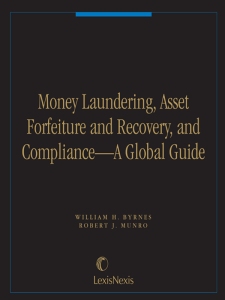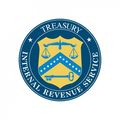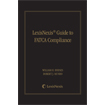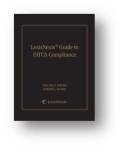IRS Releases Revised 2016 W-8BEN-E and Accompanying Instructions
William Byrnes and Haydon Perryman
This month we turn our attention to the recently revised 2016 W-8BEN-E form which has  30 parts over eight pages that can be catalogued into four sections. The IRS released its previous substantial update of the W-8BEN-E in February 2014 and in April 2016 its most recent revisionary updated form with accompanying updated instructions. The 2016 revision more represents a technical correction release for the evolution of FATCA and its IGAs since 2014 than substantive changes. The 2014 W-8 series update, on the other hand, was a major departure from the previous series, exemplified by the former W-8BEN in use since 2006 had just four parts. The 2014 Forms may continue to be used by institutions until October 2016 when it becomes mandatory to switch to the new 2016 W-8BEN-E. For a detailed FATCA evolution from pre-2010 through 2016, download my 118 page article.
30 parts over eight pages that can be catalogued into four sections. The IRS released its previous substantial update of the W-8BEN-E in February 2014 and in April 2016 its most recent revisionary updated form with accompanying updated instructions. The 2016 revision more represents a technical correction release for the evolution of FATCA and its IGAs since 2014 than substantive changes. The 2014 W-8 series update, on the other hand, was a major departure from the previous series, exemplified by the former W-8BEN in use since 2006 had just four parts. The 2014 Forms may continue to be used by institutions until October 2016 when it becomes mandatory to switch to the new 2016 W-8BEN-E. For a detailed FATCA evolution from pre-2010 through 2016, download my 118 page article.
Most Important Updates
This new 2016 W-8BEN-E includes three primary amendments.
Inclusion of Limitation of Benefits Categories
Firstly, the new W-8BEN-E contains 10 new potential items for selection to comply with a “Limitation of Benefits” (LOB) article of a double tax agreement to receive the advantages of the agreements reduced withholding provision. These new LOB boxes reside within Part III – Claim of Tax Treaty Benefits, Line 14. The items include the nine main tests that can be met to satisfy an LOB provision, and then includes a tenth “Other” catch-all category that requires the filer cite to the treaty article and paragraph number test not covered within the nine categories.
Moreover, line 15 requires further explanation be provided of how additional conditions are met to qualify for any further exceptional reduction of withholding. Line 15 must be used only if claiming treaty benefits that require that meeting conditions not already covered by the representations of line 14 (or other certifications on the form).
This line is generally not applicable to claiming treaty benefits under an interest or dividends (other than dividends subject to a preferential rate based on ownership) article of a treaty or other income article, unless such article requires additional representations. For example, certain treaties allow for a zero rate on dividends for certain qualified residents provided that additional requirements are met, such as ownership percentage, ownership period, and that the resident meet a combination of tests under an applicable LOB article.
New FATCA Category for Non-Financial Accounts
Secondly, a new checkbox has been added to the chapter 4 statuses in line 5 for payments made to payees for accounts they hold that are not financial accounts under the FATCA regulations [section 1.1471-5(b)(2)]. See Chapter 7A of the Guide to FATCA Compliance for a detailed analysis of this topic.
Coordination with IGAs
Finally, the new W-8BEN-E instructions are amended to coordinate qualification for the status of a nonreporting FFI under the IGA with a deemed-compliant FFI status under the chapter 4 regulations. An FFI that meets the requirements of both a nonreporting IGA FFI under the IGA and under the regulations should certify as a nonreporting IGA FFI, unless such entity meets the requirements for owner-documented FFI status for payments associated with this form, in which case it should certify to that status under the regulations only by completing Part X of the form.
The W-8BEN-E Structure
The filer’s primary focus will be on Part I.
Identifying Information and Choice of Classification part: All filers of the W-8BEN-E must complete Parts I (Identifying Information and FATCA Classification). Part I of the W-8BEN-E requires general information, the QI status, and the FATCA classification of the filer. Question 4 of Part I requests the QI status. If the filer is a disregarded entity, partnership, simple trust, or grantor trust, and also is claiming benefits under a U.S. tax treaty, then the filer must complete Part III. Part I, Question 5 requests the FATCA classification of the filer, of which the form list 31 choices. The classification indicated determines which one of the parts IV through XXVIII must be completed.
General Certification part: All filers must complete Part XXX (General Certification). Part XXX requires certification, under penalty of perjury, by the payee or a person authorized to sign on the payee’s behalf. This part of the final form also requires the signatory agree that she will submit a new form within 30 days if any certification made on this form becomes incorrect.
The signatory is certifying, subject to perjury:
The entity identified on line 1 of this form is the beneficial owner of all the income to which this form relates, is using this form to certify its status for chapter 4 purposes, …
- The entity identified on line 1 of this form is not a U.S. person,
- The income to which this form relates is: (a) not effectively connected with the conduct of a trade or business in the United States, (b) effectively connected but is not subject to tax under an income tax treaty, or (c) the partner’s share of a partnership’s effectively connected income, and
- For broker transactions or barter exchanges, the beneficial owner is an exempt foreign person as defined in the instructions.
Moreover, Line XXIX for identification of substantial U.S. owners is subject to the same perjury statement and other certifications made in Part XXX.
Specific Certification of FATCA Classification part: Completion of the other parts of the form W-8BEN-E will depend upon the Part I, Question 5 FATCA classification of the filer.
Substantial U.S. Owner part: The information required to answer this line may be attached to the form in a separate statement, which remains subject to the same perjury statement and other certifications made in part XXX. A filer that is a passive NFFE and thus completes part XXVI must also complete as well as part XXIX if it has substantial U.S. owners.
For a Passive NFFE, a specified U.S. person is a substantial U.S. owner if the person has more than a 10 percent beneficial interest in the entity. But if an applicable IGA instead employs the standard of “controlling U.S. persons”, then the filer must look to the definition of a controlling person within the IGA of the jurisdiction of the financial institution to which the W-8BEN-E is provided.
Who Must Provide the W-8BEN-E?
A foreign entity must submit a Form W-8BEN-E to the withholding agent if it will receive a FATCA withholdable payment, receive a payment subject to chapter 3 withholding, or if it maintains an account with an FFI.
Disregarded Entity
A disregarded entity with a U.S. owner or a disregarded entity with a foreign owner that is not otherwise able to fill out Part II (i.e., because it is in the same country as its single owner and does not have a GIIN) may provide this form to an FFI solely for purposes of documenting itself for chapter 4 purposes. In such a case, the disregarded entity should complete Part I as if it were a beneficial owner and should not complete line 3.
Beneficial Owners
Form W-8 BEN-E must be provided by each of the entities that are beneficial owners of a payment, or of another entity that is a beneficial owner. If the income or account is jointly owned by more than one person, then the income or account will be treated by the withholding agent as owned by a foreign beneficial owner only if Forms W-8BEN or W-8BEN-E are provided by each owner of the account.
Treatment as a U.S. Account
If the withholding agent or financial institution receives a Form W-9 from any of the joint owners, then the payment must be treated as made to a U.S. person and the account treated as a U.S. account. An account will be treated as a U.S. account for FATCA by an FFI if any of the account holders is a specified U.S. person or a U.S.-owned foreign entity, unless the account is otherwise excepted from U.S. account status for FATCA purposes.
Expiration of Form W-8 BEN-E
Generally, a Form W-8BEN-E will remain valid for purposes of both chapters 3 and 4 for a period starting on the date the form is signed and ending on the last day of the third succeeding calendar year, unless a change in circumstances makes any information on the form incorrect. For example, a Form W-8BEN signed on September 30, 2014 remains valid through December 31, 2017. However, under certain conditions, a Form W-8BEN-E will remain in effect indefinitely until a change of circumstances occurs.
Change in Circumstances
If a change in circumstances makes any information on the Form W-8 BEN-E incorrect for purposes of either chapter 3 or chapter 4, then the submitting person must notify the withholding agent or financial institution maintaining the account within 30 days of the change in circumstances and must file a new Form W-8 BEN-E (or other appropriate form as applicable).
The new 2016 instructions point out that if the submitter has relied upon an IGA to respond to the form, and the country is thereafter removed from the U.S. Treasury list of current IGAs, then from the date of removal a ‘change of circumstances’ has occurred. The W-8BEN-E will no longer be ‘fit for purpose’ after the expiration of the change of circumstance time frame.
Which of the 30 Parts of the W-8BEN-E to Complete?
The 2014 and 2016 W-8BEN-E form has thirty parts presented over eight pages, whereas the former 2006 dual-purpose W8BEN had just four parts. The 2016 Form W-8BEN-E, and did the 2014 version, includes both the QI (U.S. IRC Title III) and the FATCA (U.S. IRC Title IV) entity classification reporting requirements.
All filers of the W-8BEN-E must complete Parts I and XXX. The FATCA classification indicated determines which one of the Parts IV through XXVIII must be completed, and whether substantial U.S. owners must be identified under part XXIX.
Part I – Identification of Beneficial Owner
Part I of the W-8BEN-E requires general information, the QI status, and the FATCA classification of the filer.
Line 1. A disregarded entity or branch enters the legal name of the entity that owns the disregarded entity (looking through multiple disregarded entities if applicable) or maintains the branch.
Line 2. A corporation must enter its country of incorporation. Any other type of entity must instead enter the country under whose laws it is created, organized, or governed.
Line 3. A disregarded entity receiving a payment should only enter its name on line 3 if it is receiving a withholdable payment or hold an account with an FFI and
- has registered with the IRS and been assigned a GIIN associated with the legal name of the disregarded entity;
- is a reporting Model 1 FFI or reporting Model 2 FFI; and
- is not a hybrid entity using this form to claim treaty benefits.
If not required to provide the legal name, then a disregarded entity receiving a payment or maintaining an account may instead enter its name on line 3.
Line 4 firstly requests the Chapter 3 status of the recipient for purposes of U.S. withholding on U.S. source income. Question 4 formerly presented 11 entity types from which the filer may select one. The 2016 W-8BEN-E includes a new entity type, the “International Organization” and thus 12 choices.
Secondly, if the filer is a disregarded entity, partnership, simple trust, or grantor trust, then the filer must tick in the affirmative and complete Part III if the entity is claiming benefits under a U.S. tax treaty.
Line 5 requests the FATCA classification of the entity. The W-8BEN-E currently lists 32 FATCA classifications of which the entity should check only one box, whereas the previous list contained 31 classification choices. The previous 2014 instructions also stated that only one box should be chosen but with a caveat “unless otherwise indicated”. The 2016 W-8BEN-E instructions have been updated to state: “Check the one box that applies to your chapter 4 status.”
Several of the 32 classifications have had internal language updates to better align with the regulations or deadlines that have passed since 2014. By example, the classification choice of “Sponsored FFI” no longer has the reference “that has not obtained GIIN”. These modifications will be analyzed in depth in the Guide to FATCA Compliance.
Account That is Not a Financial Account
However, noteworthy is the newly added thirty-second classification because it is causing some confusion among compliance officers. It reads “Account That is Not a Financial Account”. The line 5 instruction states that if the filer is merely providing this form to document an account held with a financial institution that is not a financial account under Regulations section 1.1471-5(b)(2), then check the “Account that is not a financial account” box on line 5.
Why is this category necessary? Because the regulations limit the scope of what types of financial institution accounts are included for the FATCA definition of financial account. By example, the regulations exclude certain escrow accounts established for commercial transactions from treatment as financial accounts. The regulations also exclude negotiable debt instruments that are traded on a regulated market or over-the-counter market and distributed through financial institutions. The regulations limit the scope of a depository account to an account for the placing of money (as opposed to the holding of property) in the custody of an entity engaged in a banking or similar business.
The regulations also exclude certain accounts of insurance companies. By example, the regulations provide that a depository account includes an amount that an insurance company holds under a guaranteed investment contract or under a similar agreement to pay or credit interest thereon. The regulations also provide that a depository account does not include an advance premium or premium deposit received by an insurance company, provided the prepayment or deposit relates to an insurance contract for which the premium is payable annually and the amount of the prepayment or deposit does not exceed the annual premium for the contract. Such amounts are also excluded from cash value for purposes of determining whether a contract is a cash value insurance contract.
Comments On Completion of Part I, Line 5
Where one of the following FATCA classifications is selected, then the entity’s GIIN must be obtained (in Part 1 Line 9a) and verified against the IRS GIIN list. An incomplete or truncated TIN or GIIN may not be relied upon. It is acceptable for a limited time period that instead of providing a GIIN in Part 1 Line 9a to state “Applied for.” However, the W8-BEN-E becomes invalid if the GIIN is not provided and verified against the IRS GIIN list within 90 days.
(a) Participating FFI;
(b) Reporting Model 1 FFI;
(c) Reporting Model 2 FFI;
(d) Registered deemed-compliant FFI (other than a reporting Model 1 FFI or sponsored FFI that has not obtained a GIIN);
(e) Nonreporting IGA FFI (including an FFI treated as a registered deemed-compliant FFI under an applicable Model 2 IGA);
(f) Direct reporting NFFE; or
(g) Sponsored direct reporting NFFE;
If the country entered in Part 1 Line 2 is an IGA country then the option of “Nonparticipating FFI (including a limited FFI or an FFI related to a Reporting IGA FFI other than a registered deemed-compliant FFI or participating FFI)” is not acceptable.
If the organization is a Financial Institution in the United States maintaining its customer’s account in the U.S., then it should collect its customer’s Foreign TIN in Part 1, Line 9b. In that scenario, the lack of a Foreign TIN makes the W8-BEN-E invalid.
It is the W8-BEN-E that will identify most of the Passive NFFEs. The identification of Passive NFFE is a key concept which runs consistently not only through the U.S. Treasury version of FATCA, but also the IGAs, the latest FINCEN proposal (RIN 1506-AB25 issued July 30, 2014) and the CRS.
Passive NFFEs identify themselves as such in Part 1 Line 5 of the W-8 BEN-E. Where an entity declares itself a Passive NFFE in Part 1 Line 5 of the W-8 BEN-E, it has to complete part XXVI. Passive NFFEs are unique in that they have to declare either their U.S. beneficial owners or controlling persons on the W-8 BEN-E for the declaration to be valid. For the avoidance of doubt, the 2016 W-8BEN-E specifically includes mention of the possibility of a applicable IGA: “If providing the form to an FFI treated as a reporting Model 1 FFI or reporting Model 2 FFI, an NFFE may also use this Part for reporting its controlling U.S. persons under an applicable IGA”.
In most IGA Model 1 countries the concept of beneficial ownership is replaced by the pre-existing KYC/AML in that particular jurisdiction. In general, the concept of beneficial ownership is replaced in IGA Model 1 countries by the concept of “controlling persons” who own or control 25 percent of the entity. More accurately, in an IGA Model 1 country the U.S. beneficial ownership concept is replaced by whatever the rules are under that jurisdiction’s KYC/AML. Generally, but not always, this will be the controlling persons of at least 25 percent.
Moreover, the CRS looks to the controlling person. The latest FinCEN proposal that establishes regulations for U.S. financial institutions to apply FATCA in the U.S. includes both the “controlling person” and the “beneficial owner” concepts (see my Kluwer International Tax article of May 9, 2016: The Brave New World of AML and Tax Compliance Overlap for Tax Status Certification for FATCA, CRS and the EU. Why are so many compliance officers getting it wrong?).
32 categories to choose one from
- Nonparticipating FFI (including a limited FFI or an FFI related to a Reporting IGA FFI other than a deemed-compliant FFI, participating FFI, or exempt beneficial owner).
- Participating FFI.
- Reporting Model 1 FFI.
- Reporting Model 2 FFI.
- Registered deemed-compliant FFI (other than a reporting Model 1 FFI, sponsored FFI, or nonreporting IGA FFI covered in Part XII). See instructions.
- Sponsored FFI. Complete Part IV.
- Certified deemed-compliant nonregistering local bank. Complete Part V.
- Certified deemed-compliant FFI with only low-value accounts. Complete Part VI.
- Certified deemed-compliant sponsored, closely held investment vehicle. Complete Part VII.
- Certified deemed-compliant limited life debt investment entity. Complete Part VIII.
- Certified deemed-compliant investment advisors and investment managers. Complete Part IX.
- Owner-documented FFI. Complete Part X.
- Restricted distributor. Complete Part XI.
- Nonreporting IGA FFI. Complete Part XII.
- Foreign government, government of a U.S. possession, or foreign central bank of issue. Complete Part XIII.
- International organization. Complete Part XIV.
- Exempt retirement plans. Complete Part XV.
- Entity wholly owned by exempt beneficial owners. Complete Part XVI.
- Territory financial institution. Complete Part XVII.
- Nonfinancial group entity. Complete Part XVIII.
- Excepted nonfinancial start-up company. Complete Part XIX.
- Excepted nonfinancial entity in liquidation or bankruptcy. Complete Part XX.
- 501(c) organization. Complete Part XXI.
- Nonprofit organization. Complete Part XXII.
- Publicly traded NFFE or NFFE affiliate of a publicly traded corporation. Complete Part XXIII.
- Excepted territory NFFE. Complete Part XXIV.
- Active NFFE. Complete Part XXV.
- Passive NFFE. Complete Part XXVI.
- Excepted inter-affiliate FFI. Complete Part XXVII.
- Direct reporting NFFE.
- Sponsored direct reporting NFFE. Complete Part XXVIII.
- Account that is not a financial account.
FFIs Covered by an IGA and Related Entities
A reporting IGA FFI resident in, or established under the laws of, a jurisdiction covered by a Model 1 IGA should check “Reporting Model 1 FFI.” A reporting FFI resident in, or established under the laws of, a jurisdiction covered by a Model 2 IGA should check “Reporting Model 2 FFI.”
If the FFI is treated as a registered deemed-compliant FFI under an applicable IGA, it should check “Nonreporting IGA FFI” rather than “registered deemed-compliant FFI” and provide its GIIN in Part XII, line 26.
An FFI that is related to a reporting IGA FFI and that is treated as a nonparticipating FFI in its country of residence should check the box for nonparticipating FFI in line 5. An FFI that is related to a reporting IGA FFI and that is a participating FFI, deemed-compliant FFI, or exempt beneficial owner under the U.S. Treasury regulations or an applicable IGA should check the appropriate box for its chapter 4 status.
Requirement to Provide a GIIN
If the entity is in the process of registering with the IRS as a participating FFI, registered deemed-compliant FFI, reporting Model 1 FFI, reporting Model 2 FFI, direct reporting NFFE, or sponsored direct reporting NFFE, but has not received a GIIN, it may complete this line by writing “applied for.” However, the person requesting this form must receive and verify the GIIN within 90 days.
For payments made prior to January 1, 2015, a Form W-8BEN-E provided by a reporting Model 1 FFI need not contain a GIIN. For payments made prior to January 1, 2016, a sponsored direct reporting NFFE or sponsored FFI that has not obtained a GIIN must provide the GIIN of its sponsoring entity in line 16.
501(c) Organization
Only foreign entities that are tax-exempt under section 501 should check the 501(c) organization “Tax-exempt organization” box. Such organizations should use Form W-8BEN-E only if they are claiming a reduced rate of withholding under an income tax treaty or a code exception other than section 501. If claiming an exemption from withholding under code section 501, then it must submit Form W-8EXP to document the exemption and chapter 4 status.
Non-Profit Organizations Covered by an IGA
A non-profit entity that is established and maintained in a jurisdiction that is treated as having in effect a Model 1 IGA or Model 2 IGA, and that meets the definition of Active NFFE under Annex I of the applicable IGA, should not check a box for its status on line 5.
Completion of Parts IV through XXVIII
An entity should complete only one part of Parts IV through XXVIII certifying to the chapter 4 status. But an entity that selects nonparticipating FFI, participating FFI, registered deemed-compliant FFI, reporting Model 1 FFI, reporting Model 2 FFI, or direct reporting NFFE (other than a sponsored direct reporting NFFE) is not required to complete any of the certifications in Parts IV through XXVIII.
Part IV Sponsored FFI
Part V Certified Deemed-Compliant Nonregistering Local Bank
Part VI Certified Deemed-Compliant FFI with Only Low-Value Accounts
Part VII Certified Deemed-Compliant Sponsored, Closely Held Investment Vehicle
Part VIII Certified Deemed-Compliant Limited Life Debt Investment Entity
Part IX Certified Deemed-Compliant Investment Advisors and Investment Managers
Part X Owner-Documented FFI
Part XI Restricted Distributor
Part XII Nonreporting IGA FFI
Part XIII Foreign Government, Government of a U.S. Possession, or Foreign Central Bank of Issue
Part XIV International Organization
Part XV Exempt Retirement Plans
Part XVI Entity Wholly Owned by Exempt Beneficial Owners
Part XVII Territory Financial Institution
Part XVIII Excepted Nonfinancial Group Entity
Part XIX Excepted Nonfinancial Start-Up Company
Part XX Excepted Nonfinancial Entity in Liquidation or Bankruptcy
Part XXI 501(c) Organization
Part XXII Non-Profit Organization
Part XXIII Publicly Traded NFFE or NFFE Affiliate of a Publicly Traded Corporation
Part XXIV Excepted Territory NFFE
Part XXV Active NFFE
Part XXVI Passive NFFE
Part XXVII Excepted Inter-Affiliate FFI
Part XXVIII Sponsored Direct Reporting NFFE
Part XXIX Substantial U.S. Owners of Passive NFFE
Part XXX Certification
Part X – Owner-Documented FFI
Line 24a. An owner-documented FFI must check the box to certify that it meets all of the requirements for this status and is providing this form to a U.S. financial institution, participating FFI, reporting Model 1 FFI, or reporting Model 2 FFI that agrees to act as a designated withholding agent with respect to the FFI identified on line 1. Then select either 24b or 24c.
Line 24b. Check this box to certify that the documentation set forth in the certifications has been provided (or will be provided), including the owner reporting statement described in this line 24b, or
Line 24c. Check this box to certify that the auditor’s letter has been provided (or will be provided).
Entities Providing Certifications Under an Applicable IGA
In lieu of the certifications contained in Parts IV through XXVIII of Form W-8BEN-E, a reporting Model 1 FFI or reporting Model 2 FFI in certain cases may request alternate certifications to document its account holders pursuant to an applicable IGA or it may otherwise provide an alternate certification to a withholding agent.
A withholding agent that is an FFI may provide a chapter 4 status certification other than as shown in Parts IX through XXVIII in order to satisfy its due diligence requirements under an applicable IGA. In such a case, attach that alternative certification to this Form W-8BEN-E in lieu of completing a certification otherwise required in Parts IV through XXVIII provided that:
1) the certification accurately reflects the chapter 4 status or under an applicable IGA; and
2) the withholding agent provides a written statement that it has provided the certification to meet its due diligence requirements as a participating FFI or registered deemed-compliant FFI under an applicable IGA.
An applicable IGA certification may be provided with the W-8BEN-E if determining chapter 4 status under the definitions provided in an applicable IGA and that certification identifies the jurisdiction that is treated as having an IGA in effect and describes the status as an NFFE or FFI in accordance with the applicable IGA.
However, if under an applicable IGA the entity’s status is determined to be an NFFE, it must still determine if it is an excepted NFFE under the FATCA Regulations. Additionally, the entity must comply with the conditions of its status under the law of the IGA jurisdiction.
For more indepth analysis than we can provide within this month’s article, along with 50 contributors, we analyzed the FATCA and the CRS compliance challenges. Besides in-depth, practical analysis, we include examples, charts, time lines, links to source documents, and compliance protocols pursuant to IGAs and local regulations. download my 118 page introductory analysis here



 the renown
the renown 

















 Avoidance. These take forward HMRC’s strategy for tackling offshore evasion, No Safe Havens.
Avoidance. These take forward HMRC’s strategy for tackling offshore evasion, No Safe Havens.









